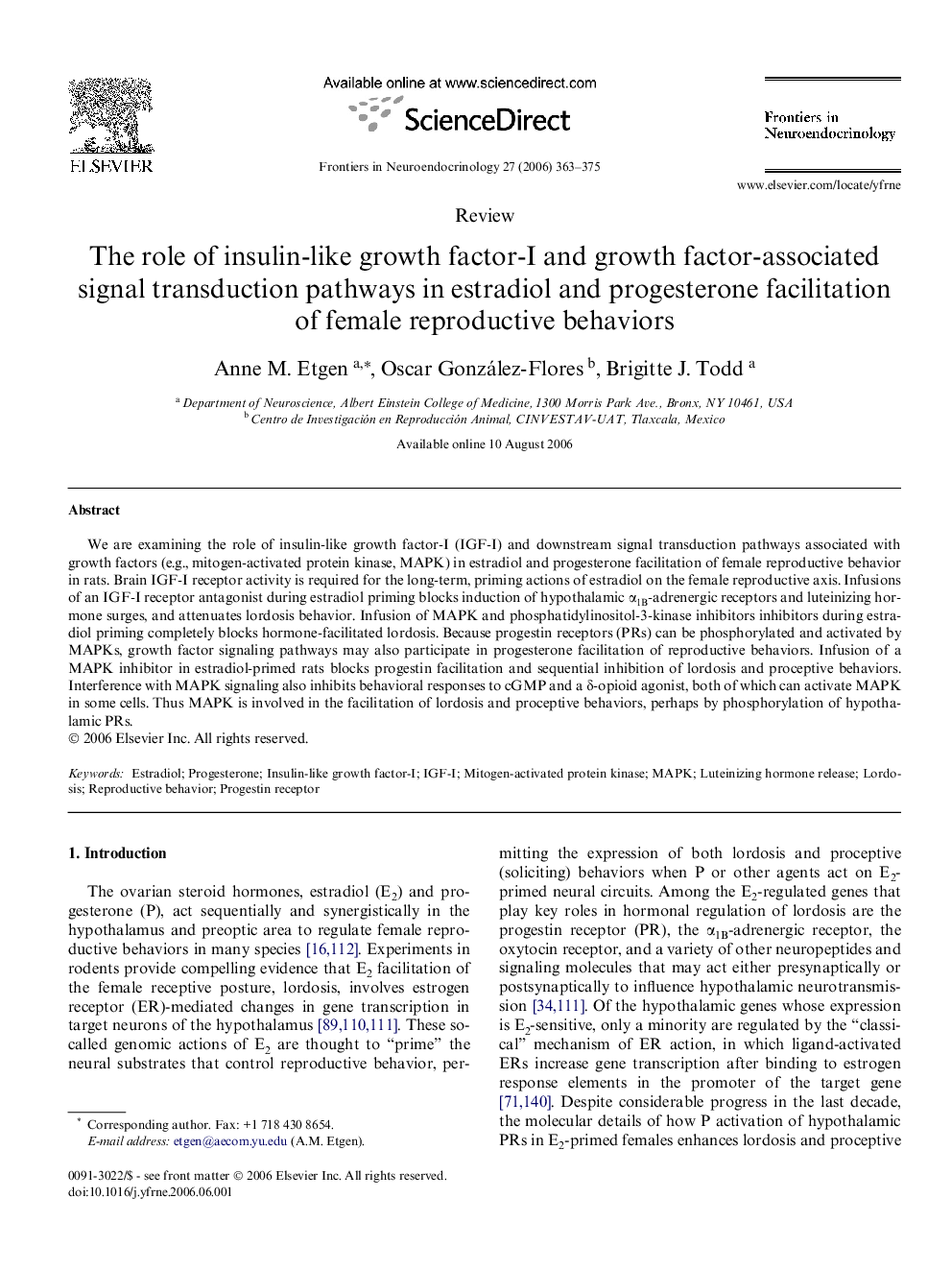| Article ID | Journal | Published Year | Pages | File Type |
|---|---|---|---|---|
| 2799603 | Frontiers in Neuroendocrinology | 2006 | 13 Pages |
We are examining the role of insulin-like growth factor-I (IGF-I) and downstream signal transduction pathways associated with growth factors (e.g., mitogen-activated protein kinase, MAPK) in estradiol and progesterone facilitation of female reproductive behavior in rats. Brain IGF-I receptor activity is required for the long-term, priming actions of estradiol on the female reproductive axis. Infusions of an IGF-I receptor antagonist during estradiol priming blocks induction of hypothalamic α1B-adrenergic receptors and luteinizing hormone surges, and attenuates lordosis behavior. Infusion of MAPK and phosphatidylinositol-3-kinase inhibitors inhibitors during estradiol priming completely blocks hormone-facilitated lordosis. Because progestin receptors (PRs) can be phosphorylated and activated by MAPKs, growth factor signaling pathways may also participate in progesterone facilitation of reproductive behaviors. Infusion of a MAPK inhibitor in estradiol-primed rats blocks progestin facilitation and sequential inhibition of lordosis and proceptive behaviors. Interference with MAPK signaling also inhibits behavioral responses to cGMP and a δ-opioid agonist, both of which can activate MAPK in some cells. Thus MAPK is involved in the facilitation of lordosis and proceptive behaviors, perhaps by phosphorylation of hypothalamic PRs.
